Happy Friday! Dairy farms in the Midwest are producing so much milk that processing plants can’t keep up, resulting in thousands upon thousands of gallons being dumped into sewers and empty fields every day.
As long as it’s not that “candy-ass two-percent or skim” stuff, sounds like a job for Michigan football coach Jim Harbaugh.
Quick Hits: Today’s Top Stories
- The Food and Drug Administration approved the first nonprescription, over-the-counter contraceptive pill Thursday, following the recommendation of an advisory panel that in May unanimously voted to back its authorization. The pill from Dublin-based Perrigo Company—called Opill—is meant to be ingested orally once a day, and is expected to be available in drug stores and online starting in early 2024.
- The Taiwanese Defense Ministry said Wednesday that 32 Chinese warplanes had crossed into Taiwan’s air defense identification zone—the largest such incursion since military exercises in April. The move comes one week after Taiwanese President Tsai Ing-wen met with American and Canadian lawmakers, and a few weeks before the island is set to conduct its annual Han Kuang drills aimed at strengthening countermeasures against Chinese threats.
- The United Nations said yesterday that the bodies of at least 87 people—some of whom belonged to the Masalit ethnic group—were buried in a mass grave in Sudan in June. The U.N. high commissioner for human rights called for a “swift investigation” into the potentially ethnically-motivated killings, which the U.N. attributed to the Rapid Support Forces (RSF) and allied militias. The RSF, which has been locked in a conflict with the Sudanese army since April, has denied any involvement in fighting in West Darfur that has killed thousands and displaced millions in recent months.
- CBS News reported Thursday that last month the number of unauthorized migrants crossing the U.S.-Mexico border hit its lowest level since February 2021. The preliminary statistics purportedly show that apprehensions dropped from 169,000 in May to just over 100,000, as the Biden administration announced several new crackdowns on illegal immigration.
- The Bureau of Labor Statistics reported Thursday the producer price index (PPI)—a measure of what suppliers and wholesalers are charging customers—rose just 0.1 percent month-over-month in June after falling 0.4 percent in March. Producer prices were up only 0.1 percent year-over-year in June, down from 0.9 percent in May and the lowest year-over-year rate since August 2020.
- An appeals court ordered New York to redraw its congressional map Thursday, a win for Democrats who are hoping to tilt the map in their favor after a bruising cycle in last year’s midterm elections. The state’s bipartisan Independent Redistricting Commission failed to agree on a new map after the 2020 census, resulting in an intense legal battle that ended with a state court judge overseeing the redistricting process for the 2022 midterms.
- SAG-AFTRA, Hollywood’s primary actors’ union, went on strike Thursday after the union failed to reach an agreement with studios on pay and artificial intelligence. The union’s 160,000 members will join the writer’s union, which has been on strike for six weeks, marking the first dual strike since 1960. With Hollywood already 80 percent shut down, the strikes could cost both the country and local economies billions of dollars.
Fighting for Par on Capitol Hill
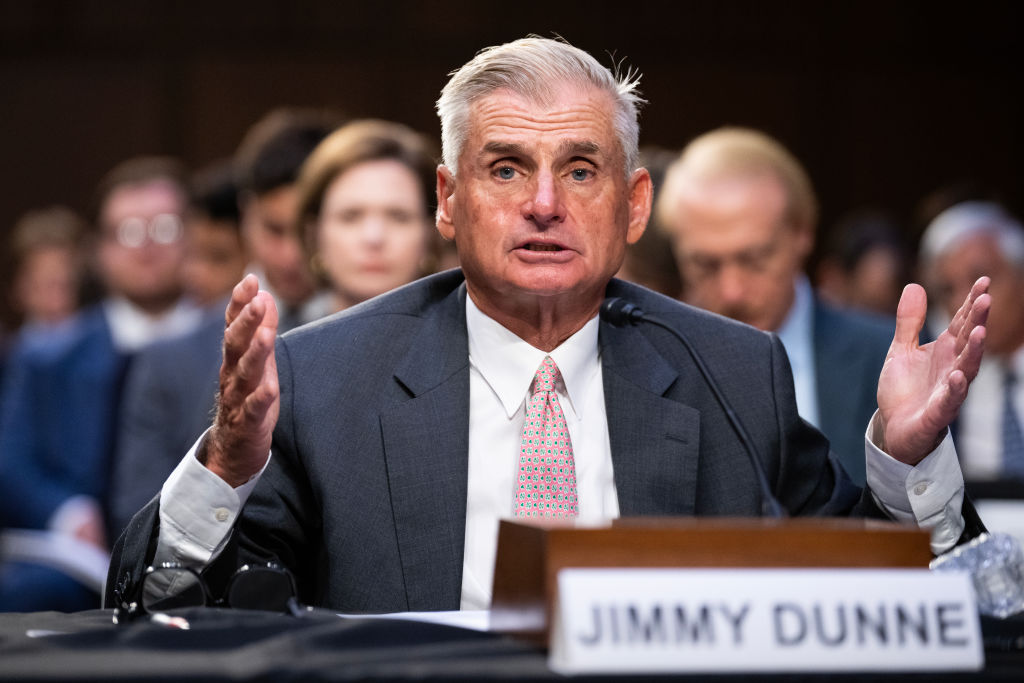
The PGA Tour wants you to know that it didn’t have any choice but to merge with the Saudi-backed LIV Golf League. “LIV would have continued to recruit our players and put our tour in jeopardy,” Ron Price—the tour’s chief operating officer—told lawmakers during a Senate hearing on the proposed deal on Tuesday. “They could have become the leader in professional golf and operated it for the benefit of the kingdom of Saudi Arabia.”
Five weeks ago, the golf world was rocked by the news that the PGA Tour and Saudi Arabia’s Public Investment Fund (PIF) had agreed to a merger framework, ending hostilities between the established golf league and the deep-pocketed upstart by creating a new umbrella organization to encompass both. The two entities had been locked in a messy public feud over golfers’ allegiances for months—PGA Tour Commissioner Jay Monahan even went so far as to invoke the families of 9/11 victims—until June 6, when Monahan sat down next to PIF governor Yasir Al-Rumayyan and told the world they were planning to let bygones be bygones.
The backlash was swift. Tour golfers—many of whom turned down enormous LIV paydays—felt betrayed. Families of 9/11 victims condemned the reversal, accusing Monahan of “co-opting” their community for his own gain. Multiple Senate inquiries were launched, and the Justice Department decided to review the deal for potential antitrust violations. “I would be very surprised at this point if the deal doesn’t get a challenge from the DOJ,” Marc Edelman, a law professor and sports and antitrust law specialist at Baruch College, tells TMD.
But for all the fanfare, the merger is far from a done deal. The two parties have agreed to a preliminary framework and ended their litigation against one another, but they’re still negotiating plenty of details, as PGA Tour representatives emphasized at this week’s hearing before the Senate Homeland Security Permanent Subcommittee on Investigations. “Some agreements are just mutual promises to continue to negotiate, and this describes the framework agreement,” said Jimmy Dunne, a member of the PGA Tour’s Policy Board and an architect of the merger. “The only deal reached in the framework is that the lawsuits among the parties have been settled. Everything else is aspirational.”
Ahead of Tuesday’s hearing, the subcommittee released a 276-page memo containing a trove of internal communications about how the deal came together—including old red-lined versions of the framework agreement that suggested a lack of consensus over key details. “The parties seemed to not be able to find a common ground on things like the future of LIV and to what extent PIF would have veto rights over major decisions,” John Nucci, an attorney at Woods Oviatt Gilman who specializes in sports law, tells TMD. “They kicked a lot down the road on a few major items that they seemingly could not agree to.”
Price, the PGA Tour COO, presented the deal as the only means of saving professional golf as we know it. “The dispute was undermining growth of our sport and was threatening the very survival of the PGA Tour, and it was unsustainable,” he said. The Tour had reportedly spent almost $50 million on legal bills, and even more boosting purse prizes in an effort to keep additional golfers from jumping ship for a bigger LIV payday. “The PGA Tour, it’s really not that big in terms of players,” Dunne said. “So if they took five players a year, in five years, they can gut us.”
As it stands now, the deal would pour more Saudi money into the league but leave the PGA Tour in control of the combined entity. “The framework agreement contains important safeguards that ensure the Tour will operate fundamentally as it does today,” Price claimed, adding that PIF could invest more than $1 billion once the deal is complete. “The Tour will control its operations. The Tour will control the board of the new PGA Tour subsidiary, and the Tour will be the governing body for competitive golf in connection with any combined golf operations.”
Democratic Sen. Richard Blumenthal of Connecticut wasn’t buying it. “[We know] that the PGA Tour surrendered once for the Saudi investment of money, and there is no assurance in this agreement that it would not do so again,” he argued. He also expressed concerns about the inclusion of a non-disparagement clause in the deal’s framework, which he worried could prevent PGA Tour players and executives from speaking out against future Saudi Arabian human rights abuses. Price and Dunne said they wouldn’t recommend any final agreement with such a clause to the PGA Tour board, but their resolve on that point didn’t seem particularly unshakeable.
Republican committee members, namely the ranking member Sen. Ron Johnson of Wisconsin, were generally more sympathetic to the PGA Tour’s plight. “LIV is financed by an entity that was committed to competing for top players with little if any regard or expectation of a direct financial return; from a commercial standpoint, it’s not a fair fight,” he said. After the hearing, he told TMD: “It seems like the PGA got a pretty good deal out of this, as best as you can expect.”
If the Justice Department does move forward with a suit trying to block the merger, the PGA Tour would need all the allies it can get on Capitol Hill. Legislative assistance wouldn’t be unprecedented; professional sports leagues and associations have often relied on Congress to get major tie-ups past antitrust regulators. “Over the years, we’ve seen Congress grant a host of different antitrust exemptions in the sports space, ranging from an exemption to allow the teams in a professional sports league to aggregate their broadcast rights for sale to a public television station to an exception to allow two professional football leagues to merge together,” Edelman explains. Portions of the framework—including an agreement for neither league to poach players from the other—has already reportedly raised red flags with the Justice Department.
At least one lawmaker is interested in helping the deal get across the finish line. “I think so,” Johnson tells TMD when asked whether he would support an antitrust exemption for the combined golf entity, noting he’d want to see the specifics. One detail he’d like included in any exemption is a requirement that the PGA Tour has permanent control of the new league. “That would seem like a reasonable condition if you’re going to grant them an exemption,” he said. “There’s your tit for the tat. So I wouldn’t have a problem with that.” During Tuesday’s hearing, GOP Sen. Rand Paul of Kentucky also expressed his displeasure with how current antitrust law deals with professional sports, which suggests he could potentially support an exemption. “Antitrust shouldn’t be involved with associations,” he said. “[It] shouldn’t be involved with the PGA.”
It will likely be months—or even years—before the deal is resolved one way or another, but negotiations will continue as the Justice Department’s investigation ramps up. In the meantime, PGA executives have some damage control to do. A member of the PGA Tour Policy Board, Randall Stephenson, resigned in protest over the weekend, citing the Saudi-orchestrated murder of activist and Washington Post journalist Jamal Khashoggi. Plenty of players themselves still have reservations, too.
“I’d say [PGA Tour Commissioner Jay Monahan] has a lot of tough questions to answer,” Xander Schauffele—the sixth-ranked golfer in the world—said Tuesday. “I don’t trust people easily. He had my trust and he has a lot less of it now.”
Rory McIlroy—the third-ranked golfer—was even more blunt. “If LIV Golf was the last place to play golf on Earth, I would retire,” he told reporters. “That’s how I feel about it.”
The Beginning of the End for Twitter?
You may have heard Twitter is going through a rough patch lately—it’s never fully recovered from TMD doing away with embedded tweets in “Presented Without Comment”—but the Elon Musk-owned microblogging site received an important vote of confidence earlier this week. “Twitter has two important advantages over other social media platforms,” a high-profile influencer wrote. “The first privilege is the freedom of speech. The second privilege is the public nature & credibility of Twitter. … Other platforms cannot replace it.”
But even with glowing endorsements like that from top Taliban officials, Twitter is on shaky ground. About three quarters of a year after Musk purchased the social media company for $44 billion, the platform—suffering from technical issues, advertiser losses, user frustration, and a steady exodus—is now valued at less than half that amount. With the future of Twitter in question, competitors are looking to draw users away to platforms of their own.
Musk finalized his purchase of Twitter last October—but only after waffling for months. “Twitter has tremendous potential—I look forward to working with the company and the community of users to unlock it,” he said in April 2022. But he tried vehemently to back out of the deal, prompting Twitter to take him to court before he finally made good on the original purchase agreement. Despite the halting enthusiasm, Musk had big hopes for the platform, wanting not only to restore a culture of free speech but also to take a step toward bigger business ambitions. “Buying Twitter is an accelerant to creating X, the everything app,” he said last year.
The head of SpaceX and Tesla—notably both hardware companies—may have gotten out over of his skis. Since Musk took control of Twitter, 80 percent of the company’s staff have left or been fired. “Turns out you don’t need all that many people to run Twitter,” Musk bragged in April. But the company soon saw an increase in technical challenges and outages, leading Musk to later admit that there is “no question” that some of the people who were fired probably “shouldn’t have been let go.” He dismantled much of the platform’s content moderation team and introduced a new subscription service designed to push users into paying for some previously free features—the blue checkmark that previously verified the identity of select accounts, for example, can now be accessed by anyone willing to pay the $8 per month subscription fee.
The changes, combined with Musk’s chaotic leadership—he used a Twitter poll to decide whether he should remain CEO of the company—have spooked a big chunk of advertisers. The platform saw a 59 percent dip in ad sales between April and May compared to the same period last year, according to an internal Twitter presentation obtained by the New York Times. Before Musk took over, advertising accounted for 90 percent of Twitter’s revenue. The changes to the blue check mark particularly irked some companies as trolls used the once-reliable identifier to impersonate mainstream brands. One account posed as the drug manufacturer Eli Lilly, tweeting, “We are excited to announced insulin is free now.” Another posed as Pepsi and tweeted, “Coke is better.”
To be fair to Musk, Twitter wasn’t exactly raking in the dough beforehand. A decade ago, Facebook founder Mark Zuckerberg famously described the company as “a clown car that fell into a gold mine.” The platform lacked a stable profit model and only posted a profit in two—2018 and 2019—of the 10 years it was listed on the stock exchange. Musk’s flurry of change is all focused on cutting costs—particularly, labor costs—and increasing revenue to make the company profitable. The company had an estimated 850,000 subscribers to Twitter Blue as of June, a respectable number but far below what’s needed to be in the black. Twitter’s new CEO, Linda Yaccarino, the former head of advertising at NBCUniversal, is looking to lure advertisers back to the platform, but it’s unclear how successful she’ll be, particularly as online advertising slows across the industry. Musk has said that he expects Twitter to make $3 billion in revenue in 2023—the company generated nearly $5.1 billion in revenue in 2021, the last full year of publicly reported financials.
Last week, Twitter introduced another surprising change: capping the number of tweets that both free and paid accounts can see on their feeds. Musk said the change was necessary “to address extreme levels of data scraping & system manipulation.” Third parties—including AI bots such as ChatGPT—scrape Twitter data for their own ends, which can put a lot of strain on servers, driving up costs to keep the site running smoothly. “It is rather galling to have to bring large numbers of servers online on an emergency basis just to facilitate some AI start-up’s outrageous valuation,” Musk explained. Other platforms, including Reddit, have recently tried to deal with the same issue, increasing charges to third parties for using the site’s API at high volumes after Twitter made a similar move earlier in March.
The tweet limit seems to have marked a sea change for those fed up with the platform. The site’s most active users were already posting less frequently—the number of tweets per month for top tweeters declined by a quarter, according to Pew Research Center. Web traffic to Twitter has also steadily trended down since the beginning of the year, according to the cloud web services provider Cloudflare. Plus, competing social media sites have steadily gained users in recent months. Mastodon, Bluesky, Spill, and others all offer Twitter-like platforms and have collectively seen hundreds of thousands of new users sign up for their sites this year.
The upstarts are still only nipping at the heels of Twitter’s estimated 360 million strong user base. But a much bigger fish entered the pond last week when Meta launched a Twitter competitor of its own called Threads. The new app is compatible with existing Instagram accounts and allows users to post messages of 500 characters or less and videos up to five minutes long. Threads has already amassed more than 100 million users with numbers continuing to climb.
Meta has been waiting in the wings to challenge Twitter, and Musk’s fumble provided a clear opening. “We’ve been hearing from creators and public figures who are interested in having a platform that is sanely run, that they believe that they can trust and rely upon for distribution,” Chris Cox, Meta’s chief product officer, said at a company meeting last month.
And even if Threads doesn’t gain as many followers as Twitter, should the new platform attract a sufficient portion of advertisers, it could pose a serious problem for Musk. When he bought Twitter, Musk took out a large loan—$13 billion—to complete the purchase, and Twitter has to make quarterly interest payments on the debt amounting to $1.5 billion annually.
Musk didn’t take the news lying down. Twitter sent a letter to Meta last week threatening legal action over the “systematic, willful, and unlawful misappropriation of Twitter’s trade secrets and other intellectual property.” The company accused Meta of hiring former Twitter employees with access to proprietary information about Twitter. Andy Stone, communications director for Meta, told Semafor, “No one on the Threads engineering team is a former Twitter employee.” (Zuckerberg, in an apparent response, fired up his Twitter account for the first time in 11 years to tweet a cheeky Spiderman meme.)
Whether online or in-person, the cage match between Twitter and Meta is only beginning.
Worth Your Time
- Here’s a question we didn’t know we had until John Timmer answered it in Ars Technica: How do ants decide whether to build a bridge out of their bodies? “Researchers are studying a species of ant, the weaver ant Oecophylla smaragdina, that can move vertically amid trees by building a ladder using its own body,” Timmer writes. “The effort takes a lot of workers away from foraging for as long as the ladder is in place, making it a major investment. But in most cases, the rewards will be uncertain; there’s only a payoff if the ants find a significant food source at the newly accessed level. To make the decision, ants appear to judge the distance between their location and the destination. But not every ant makes the same judgment, and it’s possible to trick the ants into building longer ladders by moving the destination.”
Presented Without Comment
NBC News: Secret Service Ends White House Cocaine Investigation With No Leads
Also Presented Without Comment
New York Times: Trump Super PAC Made $155,000 Payment to Melania Trump in 2021
Also Also Presented Without Comment
Bloomberg: UK Dentistry in Crisis as People Pull Out Own Teeth With Pliers
Toeing the Company Line
- In the newsletters: Nick digs into (🔒) GOP infighting over Ukraine.
- On the podcasts: Sarah, Jonah, and Mike take to The Dispatch Podcast to tackle this week’s NATO summit, the Biden administration’s decision to send cluster munitions to Ukraine, and the latest in the 2024 presidential race.
- On the site today: Price travels to Gettysburg, Pennsylvania, to profile Braver Angels—a group trying to address political polarization—and Peter digs into the growing number of Americans who identify as Native American.
Let Us Know
If you’re a current Twitter user, do you plan to give Threads a try?



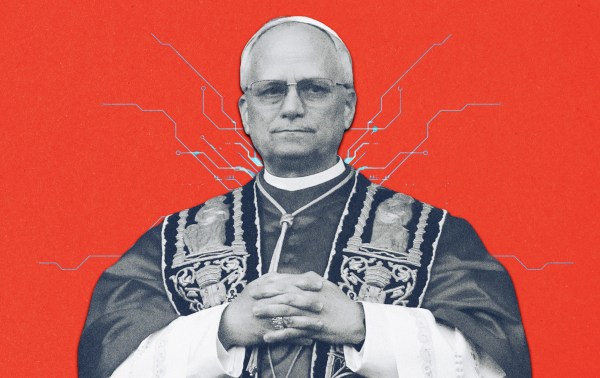
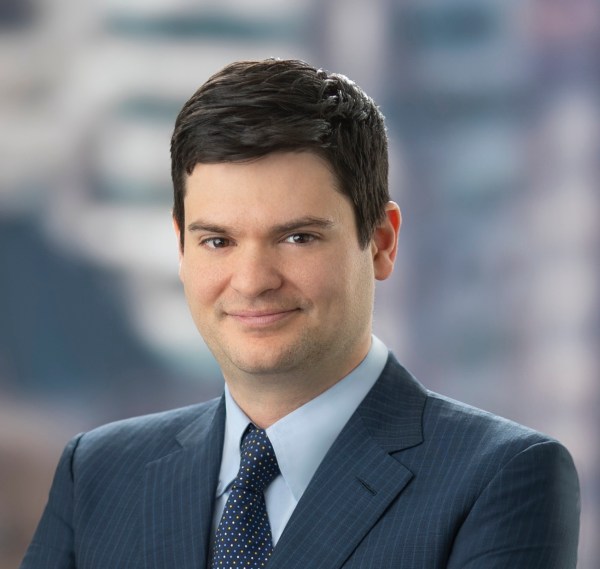

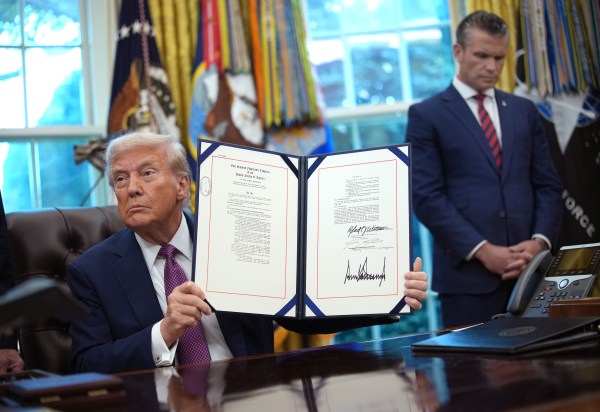
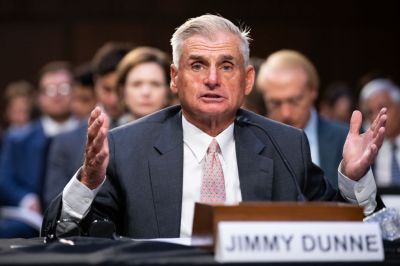
Please note that we at The Dispatch hold ourselves, our work, and our commenters to a higher standard than other places on the internet. We welcome comments that foster genuine debate or discussion—including comments critical of us or our work—but responses that include ad hominem attacks on fellow Dispatch members or are intended to stoke fear and anger may be moderated.
With your membership, you only have the ability to comment on The Morning Dispatch articles. Consider upgrading to join the conversation everywhere.